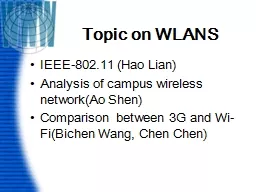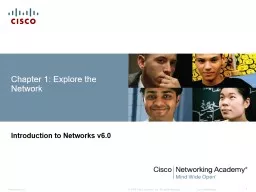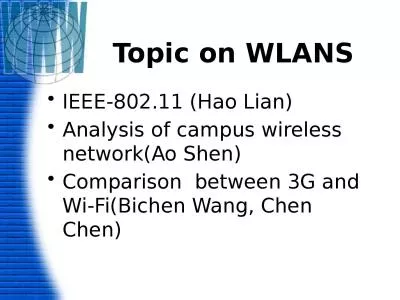PPT-Chapter 5 LANs and WLANs
Author : conchita-marotz | Published Date : 2018-03-19
Chapter 5 LANs and WLANs 2 Chapter Contents Section A Network Building Blocks Section B Wired Networks Section C Wireless Networks Section D Using LANs Section E
Presentation Embed Code
Download Presentation
Download Presentation The PPT/PDF document "Chapter 5 LANs and WLANs" is the property of its rightful owner. Permission is granted to download and print the materials on this website for personal, non-commercial use only, and to display it on your personal computer provided you do not modify the materials and that you retain all copyright notices contained in the materials. By downloading content from our website, you accept the terms of this agreement.
Chapter 5 LANs and WLANs: Transcript
Download Rules Of Document
"Chapter 5 LANs and WLANs"The content belongs to its owner. You may download and print it for personal use, without modification, and keep all copyright notices. By downloading, you agree to these terms.
Related Documents














